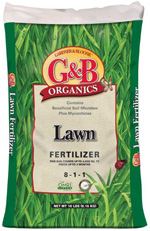|

     
|
 |
Featured Quote: "Gardens are a form of autobiography." ~Sydney Eddison, Horticulture Magazine, August/September 1993 |

|
Shade is inevitable in gardens. It is a blessing and a burden; while few plants flourish in the shade, the ones which do flourish are very pretty. As a garden matures, trees get larger than was planned, shrubs soar and become treelike themselves, and soon there is very little sun to garden in. Many of these problems can be avoided, if trees are planted so their shadows fall on paved areas or the roof of the house. Trees and shrubs can be pruned to let more light through, and some that were planted too close together should be removed, but full-grown trees and shrubs cannot be replaced quickly, so what you can do with the existing shade should be carefully thought out. There are varying degrees of shade. Deep shade is the most difficult problem. Only a handful of plants will grow in dark shade, and even they would prefer more light. Deep shade is usually caused by dense trees that keep branches close to the ground. A gain, thinning is one way of allowing more light, but sometimes it helps to simply cut off the lower branches so more light slips through. Deep shade is also a logical place for a patio or other paved area, which sidesteps the problem of what to plant. Light shade is much easier to deal with. "Light" means that some sunlight filters through whatever is directly above, or that if nothing is directly overhead but a plant grows in the shadow of something (as on the north side of a house), there is indirect light coming from the open sky above. Many more plants will grow in this kind of shade, and a few, famous for their flowers, actually require it. For summer planting, here are some great bedding plants for shade gardens. Like most shade plants, these need light but not direct sun (don't count on them in very dark entries, for instance.) All are bread-and-butter nursery items or at least easy to grow from seed. Not all are annuals, but they're treated that way and replanted each year.
Bedding begonia:
Coleus: Monkey flower:
Wishbone flower: |

|
An arrangement of fresh flowers will brighten a room, bringing the beauty of nature indoors. Picking fresh flowers that you have grown yourself is one of the delights of gardening, but whether you are picking your own flowers or buying cut flowers, you will want to do all you can to get the most from your arrangement. Picking Flowers When picking flowers from your garden, do so early in the morning or late in the afternoon. Cool them quickly by placing them in a bucket of water left in a cool place for an hour or so. This is especially important in hot summer weather. Buying Cut Flowers If you are buying cut flowers, look for bright, fresh-looking flowers that are just starting to open. Avoid flowers that have been standing in the sun or have been exposed to car exhaust fumes. Flowers with yellowing leaves on the stem or those with slimy stems have been in water for quite some time and are unlikely to be very satisfactory. When you get your flowers home, put them straight into a bucket of water without unwrapping them and leave them in a cool place to revive. Clean Vases Make sure your vases are perfectly clean. The stains in vases are usually bacteria that will get to work blocking the water uptake to the flower stems. Stains that are difficult to remove with normal cleaning may be removed by filling the vase with water and adding a few drops of household bleach. Allow the vase to soak for a couple of hours; then rinse well. Clean Water and Preservatives Clean water is essential for cut flowers. You can change the water in the vase daily or use a floral preservative. Check the vase often to see if it needs filling. Some flowers with woody stems drink a lot of water, especially in the first two or three days after cutting.
Daffodils, jonquils and tulips should not be placed with other flowers immediately after cutting because their secretions can block the stems of other flowers, causing their vase-mates to collapse. Place them in a separate vase for an hour or two. Then seal the tips of the stems by dipping them in very hot water before adding them to a mixed arrangement. If flowers develop a bent neck, they probably have an air lock in the stem and are unable to absorb water properly. Recut the stems under water and place them in cool water for a couple of hours. Most flowers absorb water best if cuts are made between nodes or joints. This is certainly true of carnations and hydrangeas. Never crush the stems, as the damaged tissue will not absorb water well, and the water will become polluted. Sharp, clean cuts are best. When creating an arrangement from your garden, remember that foliage goes nicely with flowers--try some ferns or other greenery in your arrangement. |

|
By: Tamara Galbraith Summer's in full swing, and your previously glorious flowers are starting to look a little ragged around the edges. Many plants will benefit--and even rebloom--after a mid-summer session of "deadheading," that is, removing spent flowers and/or stems to promote new growth. Here's a quick guide of deadheading techniques for different types of flowers: Pinch off individual dead flowers on balloon flower, bellflower, daylily, delphinium, foxglove, hibiscus, hollyhock. (Also included: some irises that will rebloom in the fall, depending on the variety.) Do an overall snip of dead blooms (about 2" below the flower) on blanketflower, columbine, globe thistle, goldenrod, geranium, Jacob's ladder, salvia, coreopsis/tickseed. Cut off the entire spent flower stem to either a side shoot or to the plant's base on baby's breath, bleeding heart, cardinal flower, catmint, coral bells, foamflower, gaura, Jupiter's beard, lavender, lupine, mullein, painted daisy, pincushion flower, coneflower, Shasta daisy, speedwell, spiderwort, Stoke's aster. (Listening to The Grateful Dead while deadheading is, of course, optional.) |
 |
|
If you have a pool, you may wonder why there are so many bees in it. Often you'll scoop up a half-dozen casualties when you're skimming the pool, and they tend to land on everyone--especially those wearing bright colors. Swimming pools are like big beacons for bees. They see them and they think "Water! Yes!" Swimming pools are a dependable water source for suburban animals. In many places a pool will be the only body of water inside their entire territory. They tell their friends and then they all know that your pool is the place to drink up. The problem is, you don't really want them there, and it's not a safe place for them, either. Bees have to dry out before they can fly, and the vertical and slippery walls on your pool make this impossible for them, so they will drown. They can also drown in your nice, deep birdbath. A good way to help out your local pollinators and to keep your pool safer is to create a place for them to get water safely, away from your pool. All you'll need is a basin of some sort, wide and shallow works best, some clean water, and something to put in it for the bees to climb onto to dry off. A ceramic or clay pot base works well, but you could also use a bird bath, a bowl, or even a deep dish for the basin. Marbles, glass beads, fish gravel, rocks or wood can be used on the inside. A water-absorbing rock, like pumice or sandstone, works well--they can land and drink out of the rock. Even a loofah will work (but make sure you don't use one with soap added)! The important thing is that there is something to hold water and a way for them to get out of the water. Arranging your filler at various heights in the basin will allow for bees to get water whether it's all the way full or mostly empty. As with a bird bath, you will have to clean and refill periodically. Choosing a nice decorative basin and mixing and matching different sizes and colors of substrate will create a unique-looking and fully-functional bee bath. And don't be surprised if you attract a few butterflies as well! |
 |
|
If you hate mosquitoes, you are not alone! In fact, window screens, introduced in the 1880's, were called "the most humane contribution the 19th century made to the preservation of sanity and good temper." The pesky little insect has ruined countless hikes, BBQ's and campouts. This vector has literally killed millions of people throughout history, and still affects millions around the world today. As daunting as this sounds, there are steps you can take to co-exist and stay healthy. What attracts the mosquito? After 30 million years of evolution, the mosquito has perfected its hunting skills. The mosquito uses three sensors to attract its prey:
The best thing you can do to control mosquitoes is to use a mosquito repellant and eliminate standing water around your home. A mosquito can lay up to 250 eggs at one time in still water, and they can hatch as fast as 7 days. Check your gutters frequently for collected water (especially if they sag and aren't level), along with birdbaths, buckets or boggy areas of the garden. Burning citronella candles, using an electronic bug zapper, or spraying surfaces near entertainment areas with a mosquito barrier spray will also help kill, or at least repel, mosquitoes. We also highly recommend using Mosquito Dunks if you have areas of standing water that you can't drain. Diligence is your best protection. Stay indoors at dawn and dusk hours, wear pants and long-sleeved shirts if possible, avoid any standing water, and repair broken screens. Although it can be a constant battle, by incorporating the use of insect repellents and breeding prevention (eliminating standing water), mosquitoes and the diseases they carry can be reduced, making the outdoors more accessible and enjoyable for everyone. |
 |
The Top 5 Mistakes Made by the New Gardener
1. Planting at the
wrong time of year:
This timing issue also comes into play with annual flowers and vegetables. Some flowers and vegetables like the warmth of the spring and summer, while others prefer the coolness of the fall and winter. The goal is to time your planting for the earliest part of the season you are planting for, but not too early. Let's use marigolds (a summer annual) for an example. This plant likes heat, but can freeze if the temperatures are too cold. In some areas, you might begin seeing marigolds for sale in the late winter. Can you plant them then? Of course. Should you? Maybe not. Why? While it might work--if temperatures don't drop too low--you could be replacing your plants if they do. If you are not sure whether to plant something at a certain time, please ask us; we will tell you whether it's the best time or if you would be better off waiting. Many garden centers serve a fairly large geographical area and these areas oftentimes have differing microclimates. That is why you will sometimes see plants in your local garden center that may be out of season for your particular area. The other thing to keep in mind is not to plant too late. Planting too late will not allow your flower or vegetable to achieve maturity before the cold (or warm) weather comes and stops it in its tracks!
2. Planting in the wrong exposure:
3. Planting in the wrong zone:
4. Planting plants with
different water requirements near each other:
5. Watering too often, too
much, not often enough or not deep enough: The most common mistake in regard to water is not watering enough (in terms of frequency) and not watering long enough (in terms of volume). A small plant can dry out quickly, especially in warm weather. When first planted, it should be regularly monitored to observe its water needs. Also, you need to leave the water on long enough to saturate the entire root-ball of the plant (for some things, this might be longer than you think). Standing over the plant and giving it a quick shower with your hose will probably not be enough. Also, deeper watering encourages roots to go down, thus increasing the plant's drought tolerance. On the other side of the coin is the gardener who is so dedicated that he/she waters constantly. This is not good either. Too much water (especially in heavy soils) can cause disease; eventually the roots of the plant will rot. So, strive for vigilance but not obsession when applying water to the garden. |
 |
|
What You'll Need: Salad:
Directions:
|
 click here for a printer friendly version of this page
click here for a printer friendly version of this page
 |
Written content © Garden Partners LLC, or respective authors. All Rights Reserved. Privacy Policy. All written content contained in this site is protected by United States copyright law and may not be reproduced, distributed, transmitted, displayed, published, or broadcast without prior written permission of Garden Partners, LLC. You may not alter or remove any trademark, copyright or other notice from copies of the content. |




 Preparing the Flowers
Preparing the Flowers 